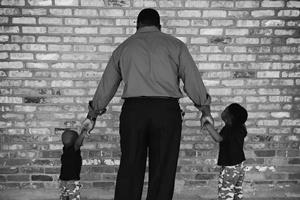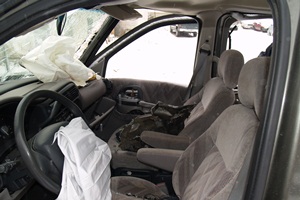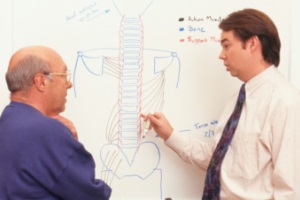Pets, Kids and Immune System Health
 Over the past few years, health researchers around the world have become increasingly interested in exactly how our immune system develops. In particular, they want to understand how it might be shaped by the environment we live in—and especially by our interactions with microbes. One theory, known as the “hygiene hypothesis,” posits that reduced exposure to bacteria, symbiotic microorganisms (for instance, the flora that live in our digestive tract) and parasites makes us more susceptible to allergic diseases by suppressing the natural development of our immune system.
Over the past few years, health researchers around the world have become increasingly interested in exactly how our immune system develops. In particular, they want to understand how it might be shaped by the environment we live in—and especially by our interactions with microbes. One theory, known as the “hygiene hypothesis,” posits that reduced exposure to bacteria, symbiotic microorganisms (for instance, the flora that live in our digestive tract) and parasites makes us more susceptible to allergic diseases by suppressing the natural development of our immune system.
The basic idea is that modern standards of household and personal cleanliness, smaller family units and less outdoor time have all combined to limit the number and types of microbes many of us come into contact with, and that this has resulted in more people having immune systems that are over-sensitive or calibrated incorrectly. This line of thinking leads to an interesting question: Do people who have been exposed to more or different types of microbes actually have stronger immune systems? One way researchers have approached this question is to study individuals who have spent more time with animals (pets) or in the company of lots of children.
The Pet Effect
A recent Finnish study performed by researchers at Kuopio University Hospital found that babies who grow up in a home that has a pet are less likely to get coughs and colds in their first year of life than their counterparts who live in pet-free homes. Lead author of the study, Dr. Eija Bergroth, a pediatrician at the university, said, “We think the exposure to pets somehow matures the immune system so when the child meets the microbes, he might be better prepared for them.” Researchers believe that the dander that pets shed and the microbes that they bring in from outdoors prime babies’ newly-forming immune systems, teaching them to fend off allergies, bacteria and viruses.
Previous studies had found a link between the presence of pets in a baby’s home and a lower risk of allergies. And in a study performed on mice, exposure to household dust from a home in which a dog lived prevented a common respiratory virus that has been linked to the development of childhood asthma.
Researchers from the Finnish study, published in the journal Pediatrics, followed the health of 397 Finnish children during their first year of life. Parents recorded the state of their child’s health on a weekly basis, including any runny noses, coughing and ear infections. They also noted if the child took any antibiotics. The results of the study found that children with pets in the home had a 44% lower risk of contracting an ear infection and were 29% less likely to be prescribed antibiotics, when compared with babies from pet-free homes.
The type of pet in the home did make a difference in how likely babies were to become ill during their first year. Dogs in the home were associated with a 31% lower risk of illness in the first year, whereas the presence of cats in the home was associated with only a 6% improvement in risk. The greatest benefit was from outdoor pets (those that were not restricted only to the indoors), as they brought in a wider array of microbes on their fur.
According to researchers, early exposure to pets seems to be the key in developing greater resistance to microbes, as it is the time that a child’s immune system is learning to differentiate friendly from unfriendly microbes, and by getting a wide array of these in small amounts, babies’ immune systems become well-trained early on.
The Kid Effect
Maybe it’s just wishful thinking, but many moms and dads (as well as teachers and childcare workers) believe that being around young children boosts their immune system. It’s easy to see why this idea has some popular appeal. After all, young children typically have lots of contact with other young children, often in environments where lots of germs can be spread. They then bring these same germs into contact with adults, whose immune systems need to fight them off over a sustained period of time. The thinking goes that this, in turn, helps make these adults more resistant to them.
But what does the science actually say about this? Rigorous research is hard to come by, but perhaps the best anecdotal evidence can be found in the “common wisdom” imparted to new kindergarten and elementary school teachers. When one woman started teaching in California, her school board warned her that she should probably plan her finances for the first year of teaching based on being out sick more than her allotted number of “sick days,” and thus not being paid for them. The woman, who had always been remarkably healthy, laughed at this advice, but then spent 25% of her first year at home sick, likely because of all the germs she picked up from kids in the classroom.
However, this same schoolteacher rarely ever got sick again. Her exposure to a wide variety of germs transmitted by the kids did seem to boost her immune system over time, and enhanced her ability to be exposed to them in the future without getting sick herself. We can possibly infer that the same thing happens with small children in the home—they pick up germs at school and bring them home where the parents are exposed to them. This exposure then builds immunity over time rather than diminishing it. Dr. Jordan S. Orange, chief of immunology, allergy and rheumatology at Texas Children’s Hospital explains the simple mechanics of this “early exposure” process this way: “When you get it [immunity], you have it. So, if you get it earlier, you’re going to be immune earlier.”

 It almost seems like a silly question, but it’s worth answering nonetheless. Why? Because it’s too important not to—a great many people could avoid the potentially serious health problems associated with being overweight or obese by losing the extra pounds. And the sooner the better.
It almost seems like a silly question, but it’s worth answering nonetheless. Why? Because it’s too important not to—a great many people could avoid the potentially serious health problems associated with being overweight or obese by losing the extra pounds. And the sooner the better.



 With warm summer weather in the forecast, many people take the opportunity to spend more time in the great outdoors. Camping, hiking and boating are all on the agenda! But beware—being outside means sharing the wilderness with all of the creatures that live there. This includes the insects!
With warm summer weather in the forecast, many people take the opportunity to spend more time in the great outdoors. Camping, hiking and boating are all on the agenda! But beware—being outside means sharing the wilderness with all of the creatures that live there. This includes the insects! According to the National Institutes of Health and Dr. Michael S. Wilkes of the Western Journal of Medicine, “Despite a plethora of research intended to guide physicians in their management of back pain, physicians still hold strong non-evidence based beliefs dating back to the 19th century.” What beliefs is Dr. Wilkes referring to? He’s talking about the long-held conventional wisdom that says bed rest is one of the best ways to treat back pain.
According to the National Institutes of Health and Dr. Michael S. Wilkes of the Western Journal of Medicine, “Despite a plethora of research intended to guide physicians in their management of back pain, physicians still hold strong non-evidence based beliefs dating back to the 19th century.” What beliefs is Dr. Wilkes referring to? He’s talking about the long-held conventional wisdom that says bed rest is one of the best ways to treat back pain.